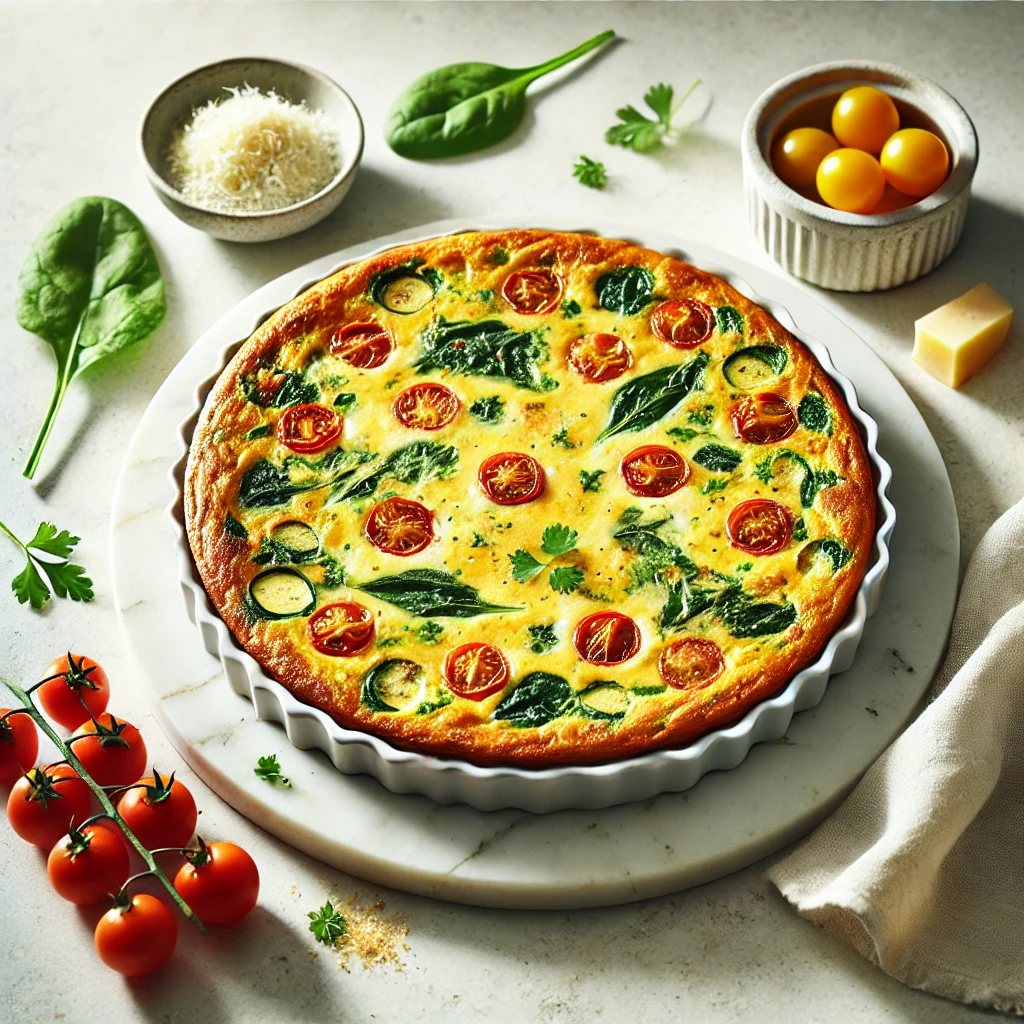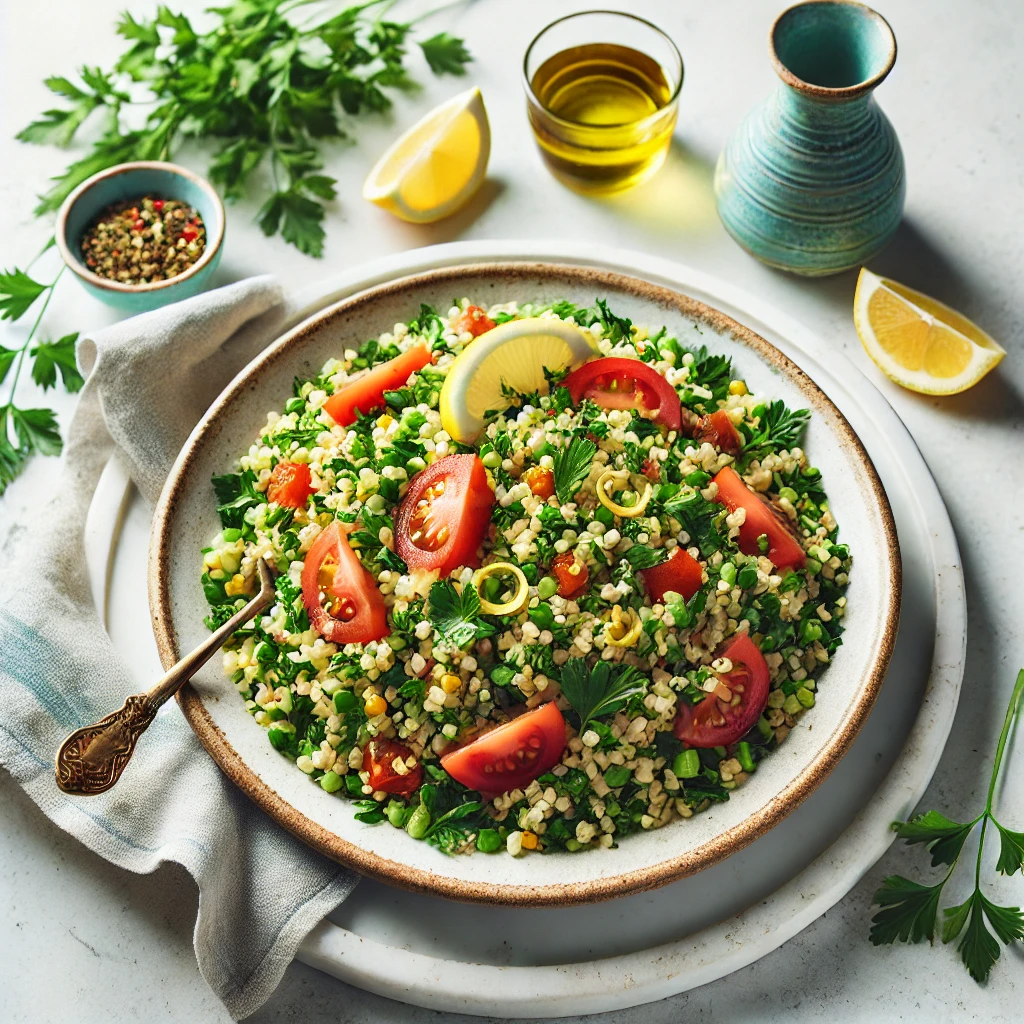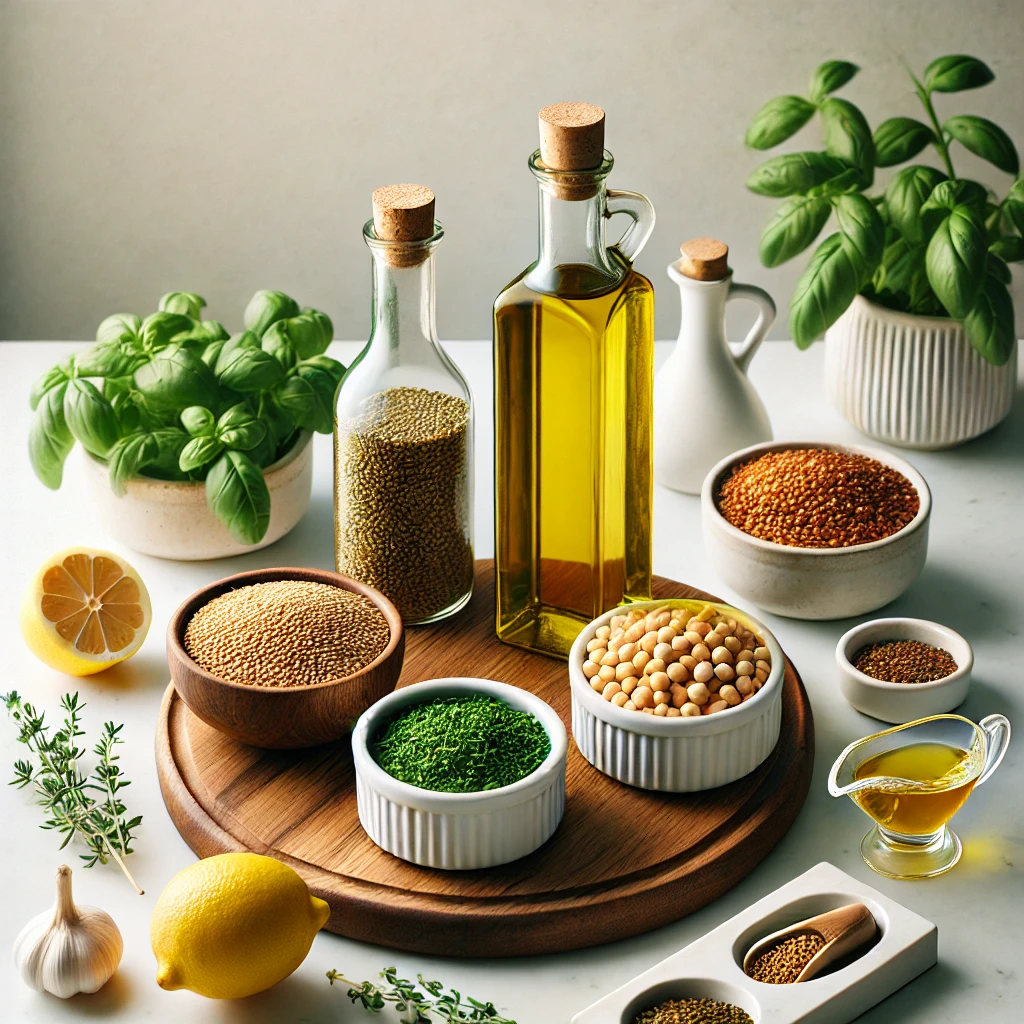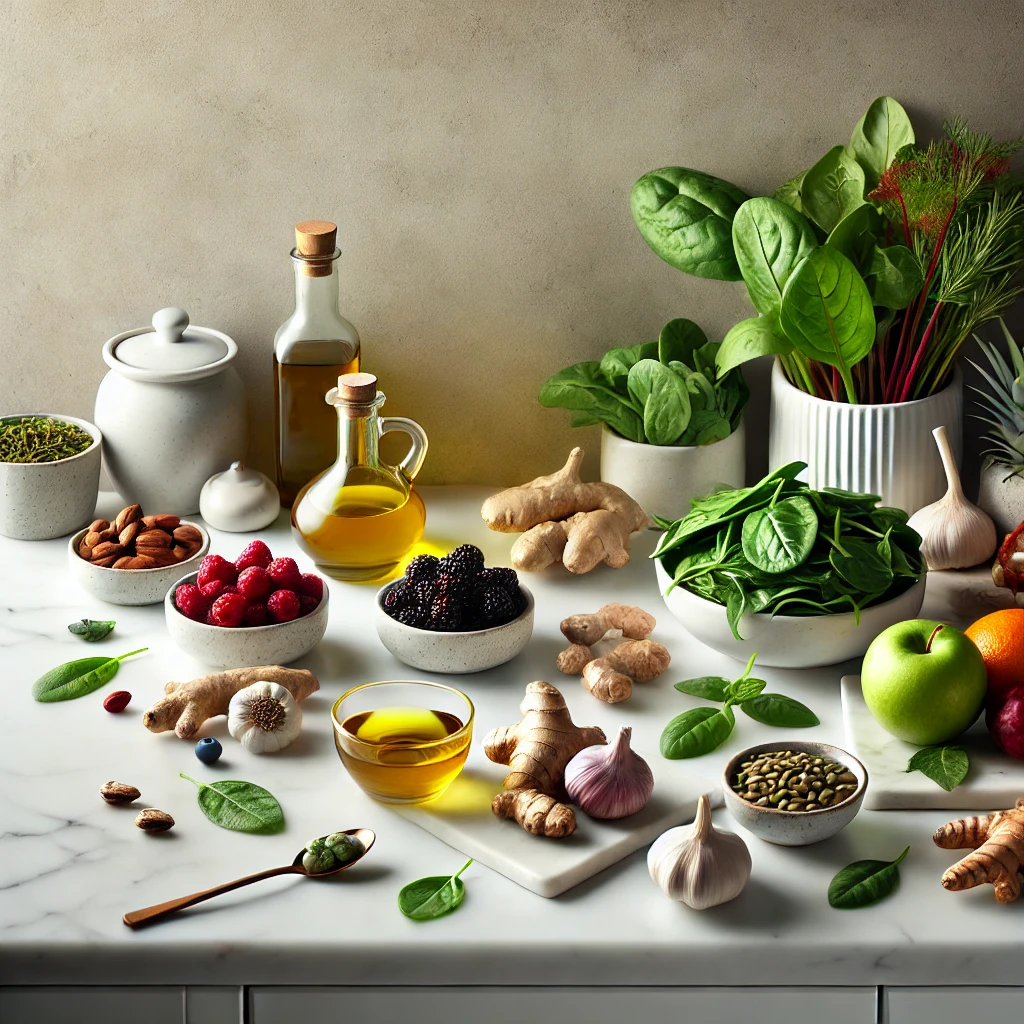How to Build a Balanced Mediterranean Plate
How to Build a Balanced Mediterranean Plate
The Mediterranean diet is renowned for its heart-healthy benefits, vibrant flavors, and focus on fresh, whole foods. If you’re looking for a practical way to adopt this eating pattern, mastering the art of building a balanced Mediterranean plate is key. By combining a variety of vegetables, healthy fats, lean proteins, and whole grains, you’ll create meals that are as nutritious as they are satisfying. Here’s how to craft the perfect Mediterranean meal in just a few easy steps.
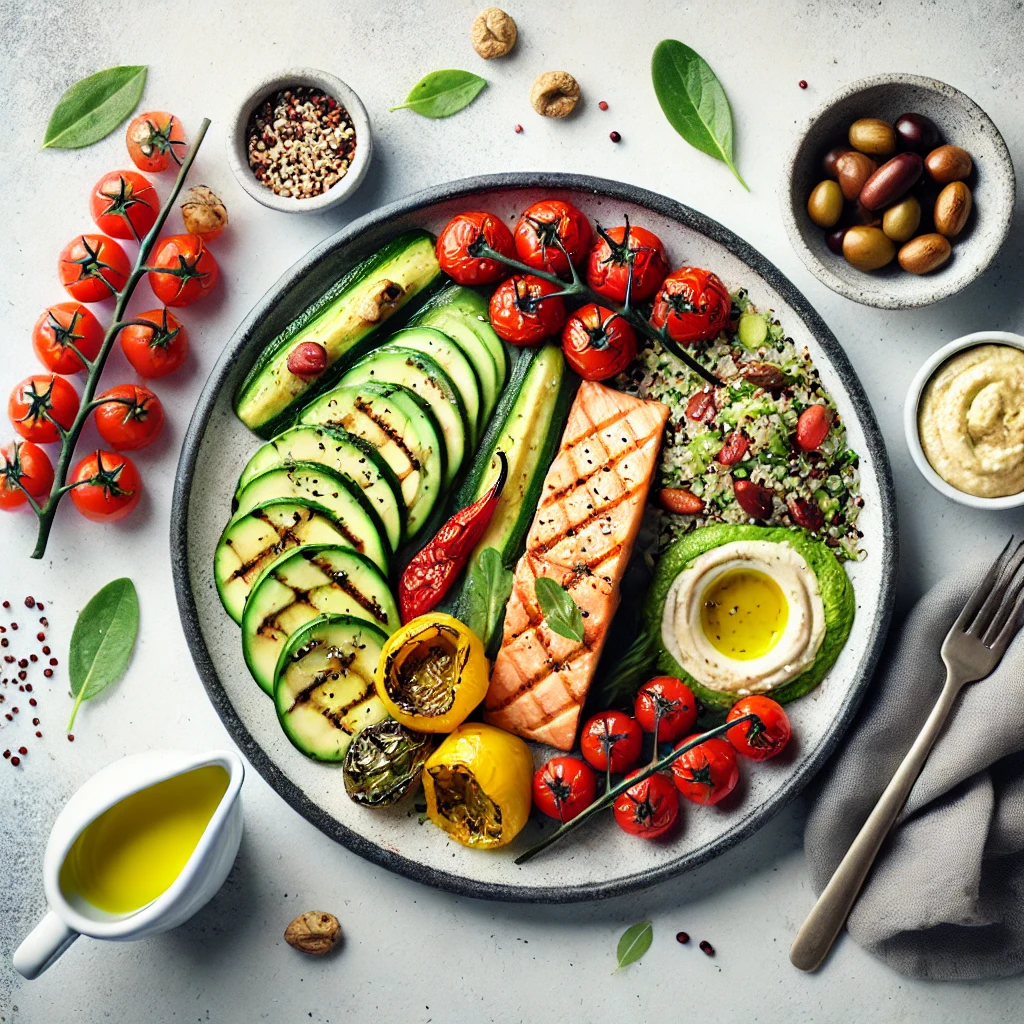
Step 1: Fill Half of Your Plate with Vegetables
Vegetables are the foundation of a Mediterranean plate, offering fiber, antioxidants, and essential vitamins to support digestion and overall health.
Best Mediterranean Vegetables:
- Leafy greens: Spinach, arugula, kale
- Roasted or grilled options: Zucchini, eggplant, bell peppers, broccoli
- Fresh and raw: Tomatoes, cucumbers, radishes
How to Include Them:
- Toss mixed greens with extra-virgin olive oil and lemon juice.
- Roast vegetables with garlic, rosemary, and oregano.
- Add a fresh side salad with tomatoes, cucumbers, and feta cheese.
Tip: Aim for a variety of colors—this “eat the rainbow” approach maximizes nutrient intake and keeps meals visually appealing.
Step 2: Add Lean Proteins (A Quarter of Your Plate)
Proteins play a crucial role in muscle repair, metabolism, and satiety. The Mediterranean diet emphasizes lean proteins and plant-based alternatives.
Best Protein Sources:
- Seafood: Salmon, tuna, sardines, shrimp (rich in omega-3s)
- Poultry: Grilled chicken or turkey
- Plant-based: Chickpeas, lentils, black beans, or tofu
- Dairy (in moderation): Greek yogurt or feta cheese
How to Include Them:
- Grill salmon or chicken as the main protein source.
- Serve a side of hummus or a chickpea-based salad.
- Top salads or grains with crumbled feta or a boiled egg.
Tip: Include seafood twice a week to reap the heart-health benefits of omega-3 fatty acids.
Step 3: Incorporate Whole Grains (A Quarter of Your Plate)
Whole grains deliver complex carbohydrates, fiber, and nutrients for sustained energy and digestive health.
Best Mediterranean Whole Grains:
- Quinoa
- Farro
- Bulgur (used in tabbouleh)
- Whole-wheat couscous
- Brown rice or barley
How to Include Them:
- Use quinoa or farro as a base for proteins and roasted veggies.
- Prepare a tabbouleh-inspired side with bulgur, parsley, and cucumbers.
- Serve whole-wheat pita or barley soup on the side.
Tip: Cook grains in vegetable broth for added flavor.
Step 4: Don’t Forget Healthy Fats
Healthy fats are a signature of the Mediterranean diet, known for their role in reducing inflammation and supporting heart health.
Best Sources of Healthy Fats:
- Extra-virgin olive oil
- Avocados
- Nuts and seeds (almonds, walnuts, chia seeds)
- Olives and olive tapenade
- Fatty fish (salmon, mackerel, sardines)
How to Include Them:
- Drizzle olive oil over salads or roasted veggies.
- Add a few slices of avocado or a handful of almonds as toppings.
- Serve olives or a small spoonful of olive tapenade on the side.
Tip: Stick to moderate portions to maintain balance and avoid excess calories.
Step 5: Boost Flavor with Fresh Herbs and Spices
Mediterranean cooking relies on herbs and spices to create bold, savory flavors without the need for heavy sauces.
Popular Mediterranean Herbs and Spices:
- Oregano
- Basil
- Parsley
- Mint
- Dill
- Garlic
- Sumac
How to Use Them:
- Sprinkle fresh herbs over grains, proteins, or salads.
- Marinate chicken or fish with garlic, oregano, and lemon.
- Add parsley and mint to yogurt for a refreshing dip.
Tip: Add fresh herbs at the end of cooking for maximum flavor.
Step 6: Include Dairy in Moderation (Optional)
Dairy is typically consumed in small amounts in the Mediterranean diet, often as a complement to meals.
Best Dairy Options:
- Feta or goat cheese
- Greek yogurt
- Ricotta
How to Include Them:
- Crumble feta over salads or roasted vegetables.
- Use Greek yogurt for dips or salad dressings.
- Enjoy plain yogurt with nuts and honey as a dessert.
Tip: Opt for full-fat, high-quality dairy for enhanced flavor and satiety.
Step 7: Stay Hydrated with Mediterranean-Inspired Drinks
Water is the main beverage of choice, but herbal teas and moderate wine consumption also play a role.
Best Beverage Options:
- Water infused with lemon, cucumber, or mint
- Herbal teas like chamomile or peppermint
- A small glass of red wine (optional, and in moderation)
Tip: Avoid sugary beverages and prioritize water throughout the day.
Sample Balanced Mediterranean Plate Idea
- Vegetables: Roasted zucchini, bell peppers, and cherry tomatoes drizzled with olive oil
- Protein: Grilled salmon with a lemon-herb marinade
- Whole Grains: Quinoa mixed with fresh parsley and cucumbers
- Healthy Fats: A small serving of olives and a drizzle of olive oil
- Flavor Boost: Garnished with fresh oregano and a squeeze of lemon
Final Thoughts: Create Your Mediterranean Plate Today
Building a balanced Mediterranean plate is simple, delicious, and loaded with nutrients. By focusing on fresh, whole ingredients like vegetables, lean proteins, whole grains, and healthy fats, you’ll nourish your body while enjoying flavorful meals.
What’s your favorite Mediterranean meal combo? We’d love to see your Mediterranean-inspired plates. Share your creations with us on social media and tag @cherryandcie


